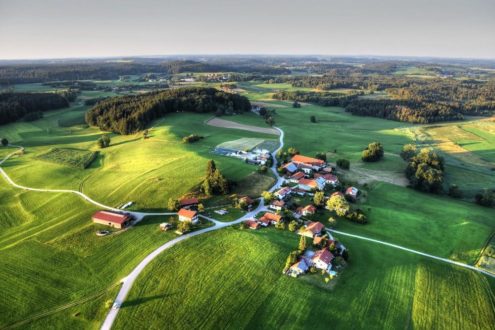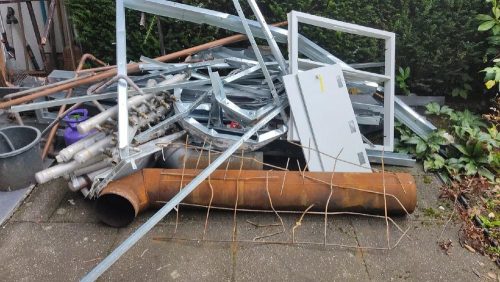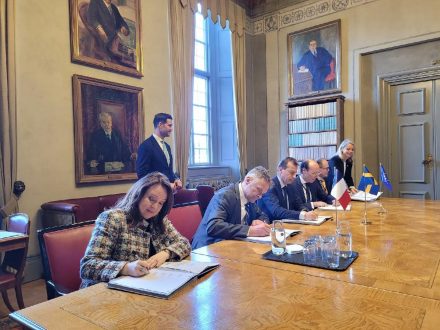European Parliament’s compromise vote on EU carbon market compromises our ability to prevent climate breakdown
After almost a year in the legislative pipeline since it was proposed as part of the European Commission’s ‘Fit for 55’ policy package last summer, the reform of the EU ETS was voted on at the European Parliament’s Environment Committee on Tuesday 17 May.*
MEPs voted on a string of issues related to emissions trading, including free pollution permits, creating a border levy known as the Carbon Border Adjustment Mechanism, and expanding the ETS to cover buildings and road transport (ETS 2).
Despite some breakthroughs and improvements on the original Commission draft, the reformed EU ETS will still not slash emissions deeply enough or fast enough to keep global heating within the 1.5°C limit set by the Paris Agreement, according to the latest research commissioned in the context of Life ETX, an advocacy project led by Carbon Market Watch.
This comes at a time when the world is hurtling towards catastrophic global heating at a much faster rate than previously anticipated. In fact, humanity will get a taste of a world that is 1.5°C hotter at least once over the coming five years, according to the World Meteorlogical Organisation.
“Given the deep political divisions revealed during the negotiations, MEPs may feel they have hammered out the best deal they possibly could,” said Carbon Market Watch’s Executive Director Sabine Frank. “However, the politics of the possible looks set to land us in the impossible situation of dealing with temperatures closer to 3°C above pre-industrial levels than to 1.5°C.
Climate bankruptcy
If the rapidly shrinking global carbon budget was divided equally on a per-capita basis, the EU would have to reduce its emissions by at least 65% by 2030. In the context of the EU ETS, which covers polluting industries and power plants, this would require an even more substantial drop of 70%.
The EU ETS package passed by the Envi committee today is likely to only result in emissions falling 67% in the sectors covered by the main ETS by 2030, leading the EU to overdraw on its balance, with either the climate or the rest of the world left to pick up the tab. “When it comes to greenhouse gas emissions, the EU is living on borrowed time,” says CMW Policy Director Sam Van den plas. “The parliament still has the chance, at the plenary, to make Fit for 55 truly fit for the climate.”
Stop making allowances
One area where the agreed reforms have fallen far short is when it comes to the contentious issue of free pollution permits. Under the reformed EU ETS, heavy industry will continue to receive pollution permits free of charge, to the tune of 4 billion tonnes (worth an estimated €400 billion) between now and 2030. Subsidising their pollution in this way removes the economic incentive for industry to take climate action and improve its resource efficiency.
“Allowing our worst polluters to pollute for free during a climate crisis is bad for the climate, ethically unacceptable and deprives governments of funds that can help propel the green transition,” points out CMW policy officer Agnese Ruggiero. “The ETS must rapidly shift towards auctioning 100% of allowances across all covered sectors.”
Failure to abolish free allowances will also hinder the Carbon Border Adjustment Mechanism from performing as an effective climate tool.
Half-way road
The compromise on ETS 2, the proposed emissions trading system for road transport and buildings, went some of the way towards meeting civil society’s demands for a socially fair mechanism for these polluting sectors. However, when it comes to environmental integrity, an impasse during negotiations led to a dead-end compromise.
Positive elements of the package include limiting the ability of companies to shift the cost of pollution permits on to consumers and ensuring that all ETS2 revenues will be used to finance the Social Climate Fund which channels support to low-income households and vulnerable communities.
On the downside, the compromise ETS2 only applies to commercial vehicles and buildings until 2029. This means that, for the remainder of the decade, three-quarters of emissions from vehicles and buildings will be exempted. This will slow down progress in decarbonising these sectors at a time when humanity is on track to smash through the 1.5°C threshold. While it is important to protect the vulnerable from experiencing increased energy poverty, there is no reason not to have included wealthier households in the ETS2 and used the revenue to help poorer households to switch to renewables.
“Every tonne of emissions causes damage and carries a cost to society. Putting a price on emissions encourages us to choose more sustainable options. With the right safeguards in place, ETS 2 could have played an important role in spurring the transition towards renewable energy,” explains CMW’s Elisa Martellucci. “As it currently stands, the scheme will have a marginal impact on emissions and risks becoming hard to implement in practice.”
No rocket science required
To give the ambition of the EU ETS a much-needed boost, Carbon Market Watch recommends, based on research commissioned and the available scientific evidence, a three-stage rocket approach.
- The one-off reduction in the maximum emissions allowed by the EU ETS, known as the cap, needs to be reduced more dramatically, from the currently proposed drop of 117 million tonnes to at least 350 million tonnes
- The speed at which the cap is reduced needs to be accelerated. Towards that end, the annual reduction of the available number of pollution permits traded on the system (known as the Linear Reduction Factor) needs to be raised to 4.4%, instead of the 4.2% proposed by the European Commission.
- The thresholds of the Market Stability Reserve, which takes surplus emissions allowances out of the market, must be revised downwards and reach zero by 2030.
Please note that jettisoning any stage will cause the rocket to crash and the ETS will not be able to meet its target, as this and other modelling exercises clearly demonstrate.
*Based on initial voting indications from the European Parliament
Carbon Market Watch
Rue d’Albanie 117
B1060 Brussels
Telefon: +32 (2) 33536-63
Telefax: +32 (2) 33536-69
http://www.carbonmarketwatch.org
Communications Officer
Telefon: +32 (489) 395-665
E-Mail: noemi.rodrigo@carbonmarketwatch.org
![]()



